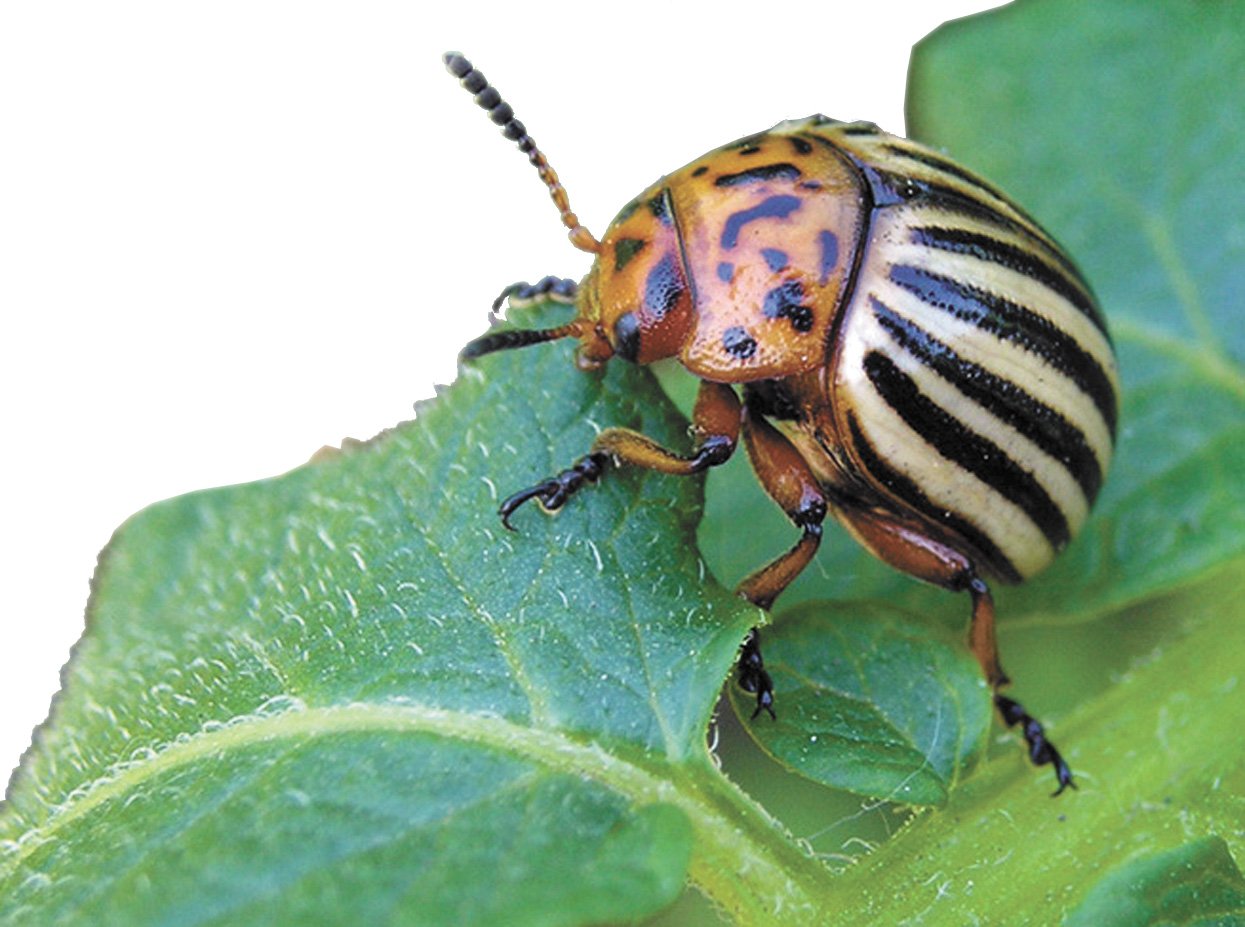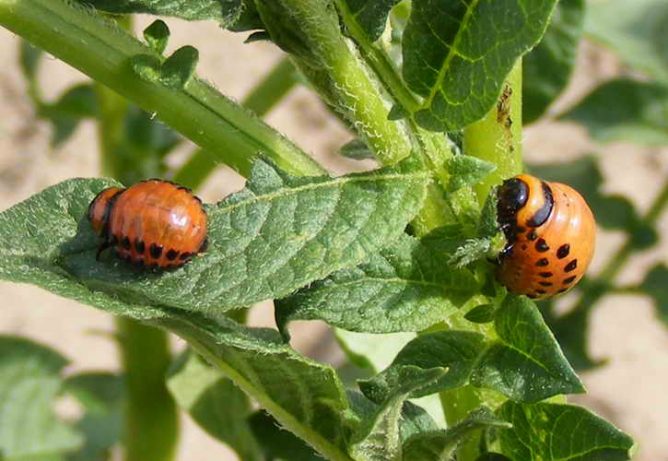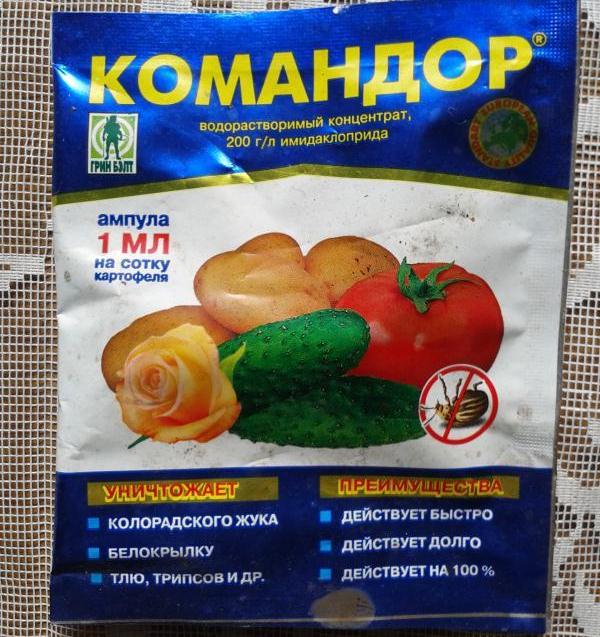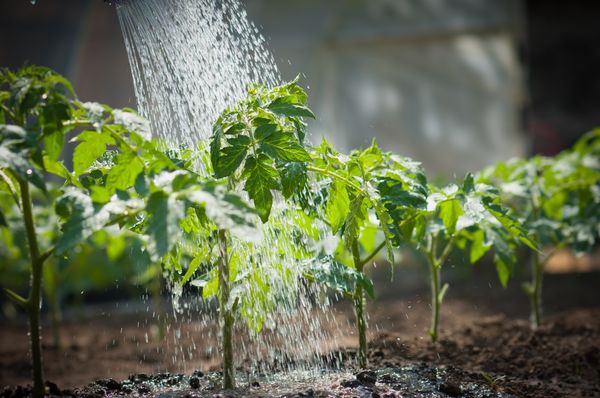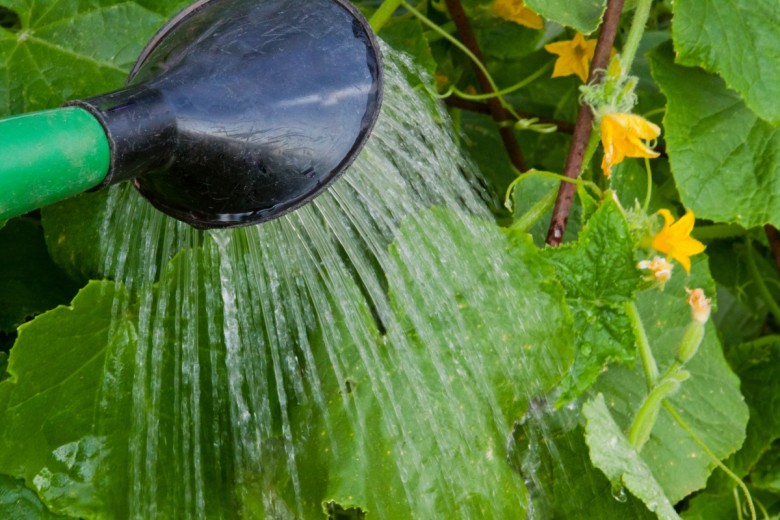Content:
Tomatoes are picky vegetables that need the right conditions for growth and harvest. This vegetable came to Russia as a wild plant from Ecuador, and after studying it became a popular vegetable garden.
Tomato is a vegetable that requires regular watering and is afraid of drafts. However, with proper care, it produces a large amount of tasty and healthy harvest! The disadvantage of the plant is that it needs protection from diseases and pests throughout the season. One of the more dangerous insects for tomatoes is the Colorado potato beetle.
How to save tomatoes from the Colorado potato beetle
The Colorado potato beetle appears on tomato seedlings when 4-6 leaves have already formed on the stem. This pest lays its eggs on them. It is they who carry the main danger, since the larvae devour the foliage of the tomatoes up to the stem and the plant dies.
How to deal with the Colorado potato beetle on tomatoes? There are several proven ways:
- Collect Colorado Potato beetle larvae by hand.
- Remove using folk methods.
- Eliminate with chemicals.
Each method has its own characteristics, but each produces a result!
Manual method of removing the beetle from tomato seedlings
Collecting larvae and adult beetles from tomato seedlings by hand has to be carried out regularly.
Folk ways to get rid of the Colorado potato beetle on tomatoes
Tomato bushes are showered with ash, gypsum, cornmeal or cement. But in addition to pollination, there are folk recipes for solutions for spraying a plant in order to protect against the Colorado potato beetle.
- A decoction of celandine. Cooking method: pour 3 kg of raw celandine with boiling water and leave for 3 hours, add calcium chloride (1.5%)
- Sunflower infusion. Sunflower flowers weighing 1 kg. pour boiling water over and leave to infuse for 72 hours.
- Poplar sprayer. Pour cold boiled water over less than half a bucket of poplar leaves, bring to a boil. Leave to infuse for 72 hours.
- White acacia solution. Crushed dried white acacia bark (1 kg) is filled with water (10 liters) and left in a dark place to infuse for 72 hours.
- Infusion of walnut leaves. Walnut greens weighing 1 kg are poured with water (10 liters), left under a closed lid for infusion for 7 days, and then filtered.
In addition to spraying, a method of mulching the soil between the plants with straw is used. Mulch provides good conditions for insects that eat Colorado potato beetle larvae and other pests (ground beetle, ladybug, spiders). This method is called agrotechnical.
Alternative methods of processing tomatoes from pests are best alternated with chemicals.
To protect tomato seedlings from a pest, you need not wait for them to appear on the foliage, but prevent it.To do this, before planting, treat the soil, but not with chemicals, but with folk remedies, disinfect it with boiling water and pour wood birch ash into the holes.
Chicken droppings will also help get rid of bugs. It is added to the soil after harvest so that there are no harmful insects the next year. Litter not only removes larvae, but also fertilizes the soil and promotes the development of the root system of vegetables. In order for chicken droppings to help get rid of pests, you need to take its 5% solution infused in water.
Chemicals for processing tomatoes
How and with what to process tomatoes from the Colorado potato beetle? To do this, you can buy insecticide preparations in agricultural stores (Commander, Regent, Bankol).
But before processing tomatoes with such means, you need to consider that:
- Such chemicals, if used excessively, pose a danger to both the plant and the human skin, therefore it is necessary to carry out the irrigation procedure with gloves and other protective equipment. Strictly observe the quantities and norms prescribed in the instructions
- With prolonged use of the drug Bankcol, its effect decreases, over time, insects begin to develop immunity to the remedy.
An effective remedy in the fight against coloradas is Commander (imidaclopridnoe agent). Acts in a contact-intestinal way, well poisons beetles and their larvae. The drug can be sprayed onto the foliage of the plant, or it can be applied to the soil (in the form of ampoules).
Gardeners with many years of experience know another way than to process tomatoes from the Colorado potato beetle with the help of the Colorado potato beetle itself! Adult beetles are caught and filled with water. The beetles die and sink to the bottom, the water with the beetles is infused for about 7 days. Dilute the resulting liquid with water 1 to 1, so as not to damage (not burn) the tomatoes. You can observe the plants for several days after spraying with this solution and determine the optimal concentration for the next application.
What pests threaten tomatoes
In addition to the Colorado potato beetle, other insects can also harm tomatoes:
- Medvedka (gnaws a tomato stem or damages its root system, which leads to wilting of the plant).
- Wireworms (damage the roots of tomatoes and can penetrate their stem, which threatens the death of the culture).
- Whitefly (sticks to the leaves of seedlings and draws out juices and moisture from them, which reduces the amount of harvest)
- Caterpillars (damage the foliage and stem, the plant withers and dies).
- Aphids (damages foliage and stem, they curl and dry).
Ways to fight
To remove the bear from the soil, you need to treat it with Thunder, the bear will leave. You can also pour red hot pepper or table vinegar (1/2 liter of vinegar per 10 liters of water) into the bear's mink.
To remove the wireworm from the soil, 3-4 days before planting tomato seedlings in the ground, bury pieces of raw vegetables stretched on sticks sticking out of the soil. After 4 days, the sticks are pulled out along with the larvae and seedlings can be planted.
To avoid the appearance of a whitefly, you need to treat the seedling with a solution of Phosbecid or use the drug Confidor.
You can get rid of caterpillars with the help of timely weed removal and manual collection of these pests.
In order to remove aphids from tomatoes, you can apply chemistry (Ratibor), but it is better to resort to folk methods. A decoction of simple herb, water and laundry soap is perfect for spraying plants and removing aphids.
To prevent the plant from being damaged by insects, it is necessary to carry out a thorough examination, care and do regular processing.Only an attentive and caring owner will have a good healthy harvest of both tomatoes and other vegetables!
